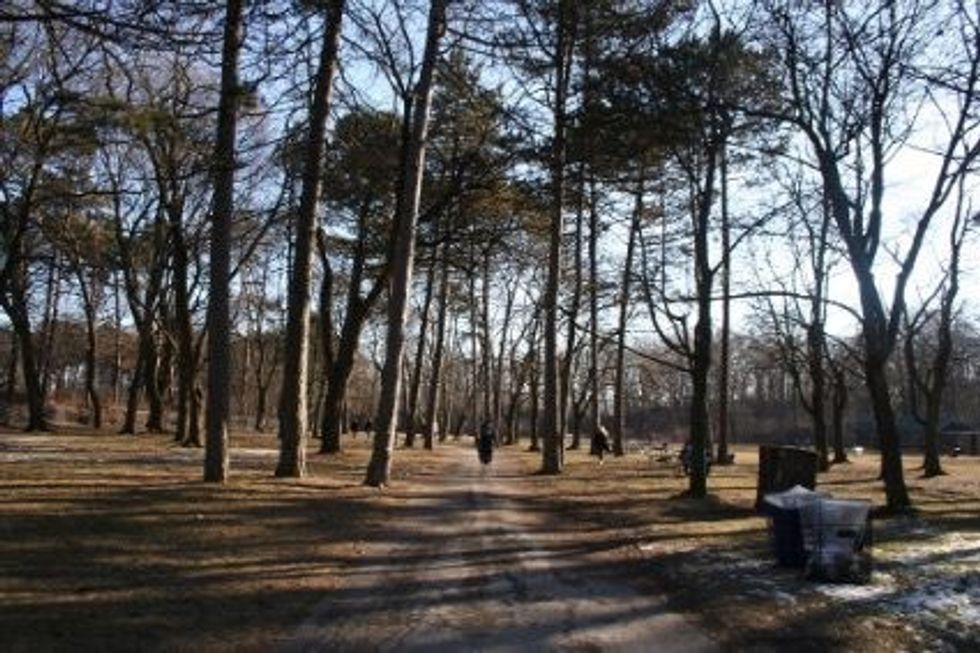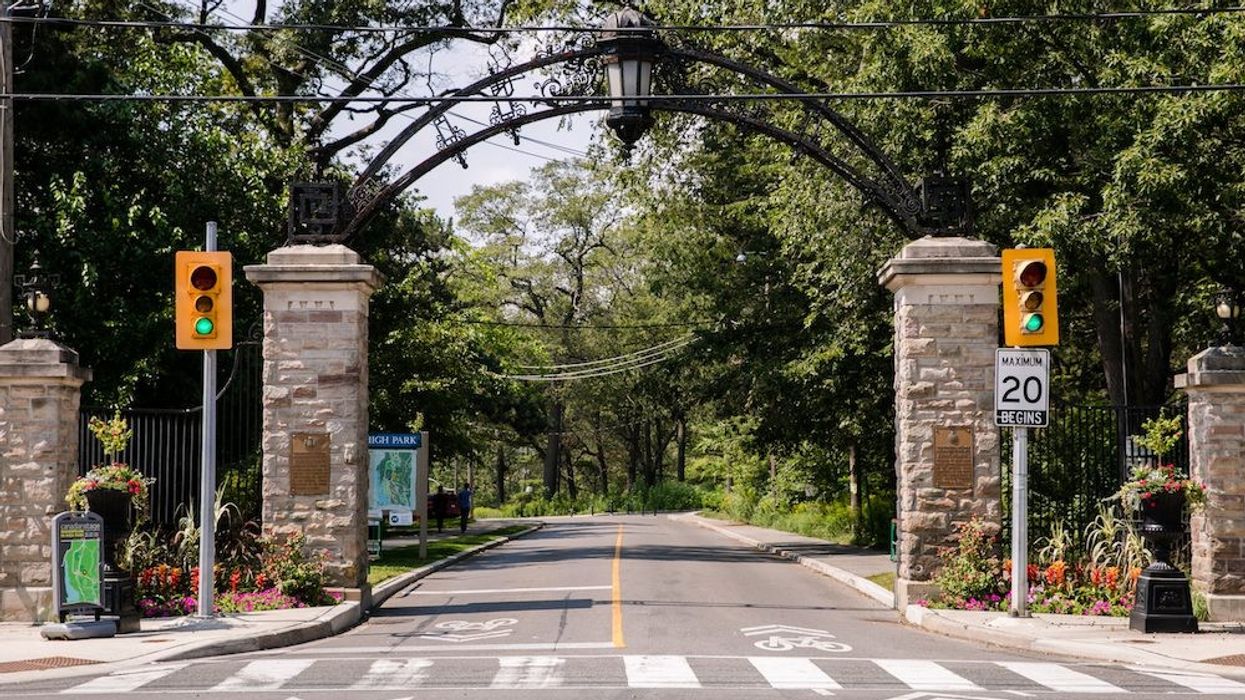The car -- or lack thereof -- has been front and centre of a passionate debate about the future of Toronto’s sprawling High Park.
Last summer, growing tensions between cyclists, police, and drivers in the 400-acre park made for headlines and potential lawsuits. It all began when police started enforcing a posted 20 km/h speed limit in High Park by issuing tickets to cyclists. While some concerned residents applauded this move (and expressed their support on social media), many people felt that cyclists are being unfairly targeted.
In fact, fingers point to cars as the major culprit, which have been responsible for accidents and injuries in and around High Park in recent years. This past summer, journalist James McLeod hit High Park with his own speed radar, and aptly documented his findings on Twitter. “Literally, the first car was going double the speed limit,” reads one tweet. “John Tory says cars should obey the law. Where are the police?” He went on to highlight a slew of other vehicles that were travelling above the 20km/hour speed limit, including a church bus.
In a climate of record-breaking numbers of new residents, some say High Park’s use has outgrown its capacity for cars. The take away from what the park should be: a nature-filled sanctuary where people can escape the daily grind (and maddening congestion) of big city life -- certainly not a place of perpetual conflict.
Late last year, results of the High Park Movement Strategy survey, which surveyed 10,384 people, revealed that the majority of people want a car-free High Park. The move would follow that of other major urban centres, like New York City, which banned cars entirely from Central Park in 2018.
When it comes to priorities for the park, 58% of respondents reported they wanted to see measures taken to reduce the motor vehicle activity within the park. They were also concerned with mitigating risk at conflict zones where road users mix (56%), reducing the number of roads in the park where motor vehicles are permitted (55%), and providing dedicated bike lanes (54%). Meanwhile, the lowest priority was placed on offering direct vehicular access to interior park destinations (62%) and maintaining car parking within the park (53%). Currently, the park is closed to car traffic from 11pm Friday nights to 7am on Mondays -- something that was implemented a few years back in response to the pandemic.
As Toronto increases in density, one towering new condo development and ambitious immigration target at a time, city residents need all the green space they can get -- and an expansive suite of outdoor condo amenities isn’t always going to cut it. More than just a nice idea, access to green space in urban centres has been linked to improved mental health and lower levels of loneliness.

The pandemic -- and Toronto’s relentless lockdown measures -- highlighted a glaringly obvious reality: we will soon have too many people for the city’s green spaces. On countless weekends in the summer of 2020, Trinity Bellwoods Park was so packed with people that it was virtually impossible to score a square foot of grassy real estate. Meanwhile, hours-long lines for both water taxis and ferries -- filled with those seeking the breezy refuge of the Toronto Island -- spanned all the way down the block. While the influx of cooped-up residents to these green spaces can be considered a lockdown era anomaly, the reality is that we could see a similar sight in the next few years due to population growth within the city core.
As the crown jewel of Toronto's park systems, banning cars in High Park makes sense as we look toward the future, in order to reduce the ensuing competition for pieces of its supposedly peaceful green space. Furthermore, it’s not like the park is in the middle of nowhere; it sits just blocks from a TTC station. Not to mention, one streetcar line sits on its southern border, while another enters the park at its eastern edge.
Of course, there’s room for compromise. For example, cars could be banned only during the peak season. Last year’s survey asked for feedback on four draft strategies for network improvements. Strategy 1 would prohibit vehicles within High Park; Strategy 2 would prohibit vehicles at scheduled times; Strategy 3 would ban vehicles on certain park roads; and Strategy 4 would allow visitor vehicles at all times.
Respondents indicated the highest level of support for Strategy 1: no visitor vehicles allowed within High Park (44% strongly support and 13% support). Tellingly, Strategy 4: visitor vehicles allowed at all times, had the lowest level of support (17% strongly support and 18% support), and the highest level of opposition (49% strongly do not support and 19% do not support).
At the end of the day, Toronto is inevitably moving in a direction where the car takes a back seat to transit and other modes of transportation. This is reflected in everything from the limited number of parking spots in new urban developments, to massive investments in new transit and an increase in pedestrian and cyclist-centric spaces in the city in spots reclaimed from the car. The reality is, getting from point A to point B via car is only going to take longer in the years ahead. Personally, I'd rather see cars banned in the park than on a city street.
As for the future of High Park, its fate has yet to be decided. In the meantime, one thing seems quite certain: the car-free weekends likely aren't going anywhere in the near future.


















